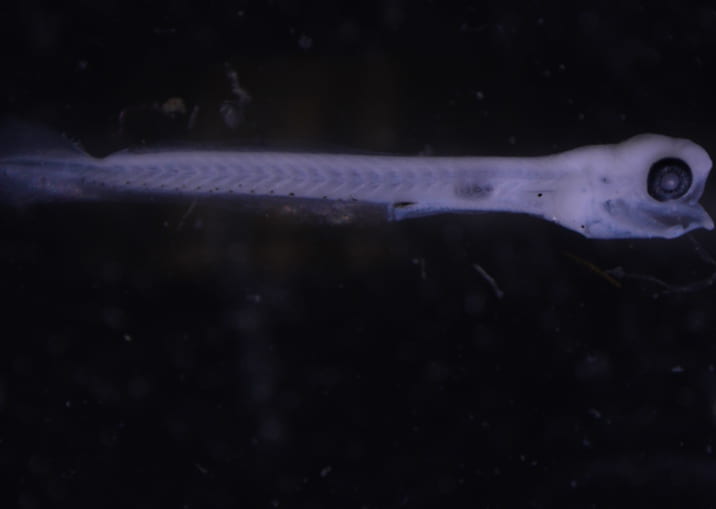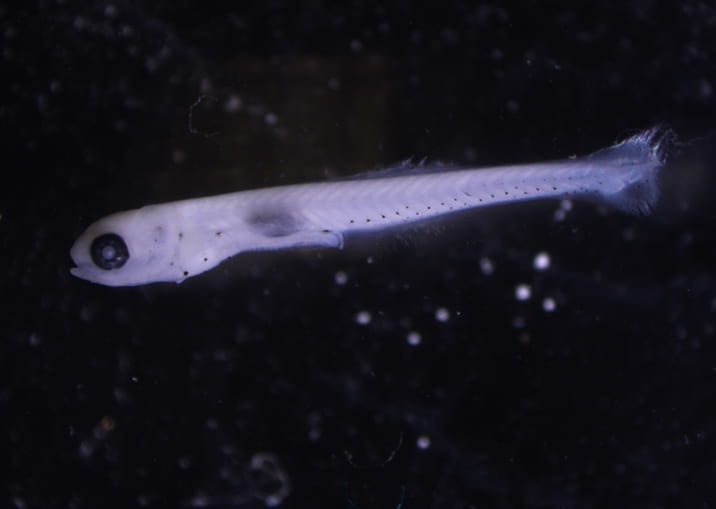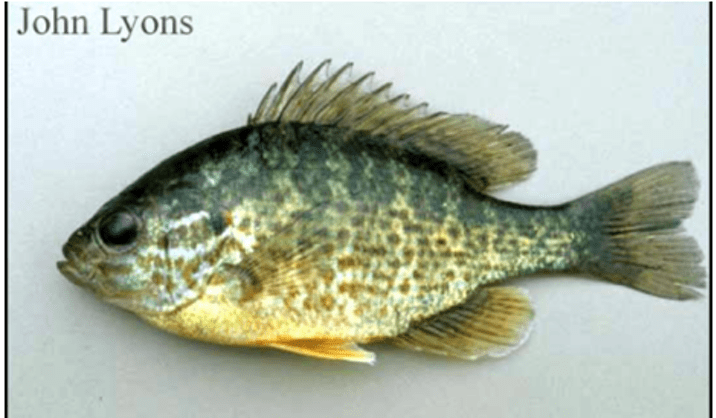Key Characteristics:
- Roughly equal number pre and post-anal myomeres.
- Fewer total myomeres than Percidae (less than 35).
- Double dorsal fin, but this may not be visible until they are older.
- Dorsal and anal fins across from each other.
- As they age, become deep bodied
- Can have many or few melanophores.

Larval Pumpkinseed. 6 mm. United States Fish Wildlife Service. Burns Harbor, IN. Brianna McDowell. 2017.

Larval Pumpkinseed. 7 mm. United States Fish Wildlife Service. Burns Harbor, IN. Brianna McDowell. 2017.
- Body not elongated, eel-shaped, round in transverse section, uniformly pigmented (1B)
- Chin barbels absent (3B)
- Snout short, its length usually less than 10% TL; median fins otherwise (5B)
- Median fins or finfolds showing distinct separation (7B)
- No adipose fin, or demarcation of one, in finfold (10B)
- Preanal myomeres greater than or equal to postanal myomeres (14A)
- Preanal myomeres approximately equal to postanal myomeres (difference five myomeres or less) (15A)
- Total myomeres less than 35 (20B)
- Total myomeres between 26 and 34 (21B)
- Adipose fin or its position absent (23B)
- Double Dorsal Fin (24A)
- (Centrarchidae)
Adult History
- Physical Description
- Black gill spot has orange/red crescent on opercle (gill flap), long and pointed pectoral fin, sides are dotted with blue, green, yellow, and orange, 7 – 10 vertical bands, 38-43 ctenoid lateral scales, forked or rounded tail, and terminal mouth
- Spawning Habitat
- Lakes, ponds, rivers, and creeks (calm areas)
- Shallow Water (less than 2 feet)
- Among aquatic vegetation
- Spawning Substrate
- Eggs are deposited on gravel, sand, clay, or mud bottoms with aquatic vegetation
- Spawning Behavior
- Polygynandry Behavior
- Males builds the nest and guard the nest (before and after egg deposition)
- Spreading their opercula, biting, charging, and chasing
- Fans the eggs to keep them oxygenated and clean
- Spawn in colonies (3-15 nests within one colony)
- Often with other sunfish species
- Male chases the female into the nest
- Female leaves after spawning into multiple males’ nests
- Males change colors during the breeding season
- Time of Year
- May – July/August in Lake Michigan
- Spawning typically takes place at water temperatures of 50 – 65°F
- Extreme temperatures of spawning recorded up to 85°F
- Diet
- Omnivore
- Snails, small fish and eggs, leeches, aquatic crustaceans, vegetation, and insects

